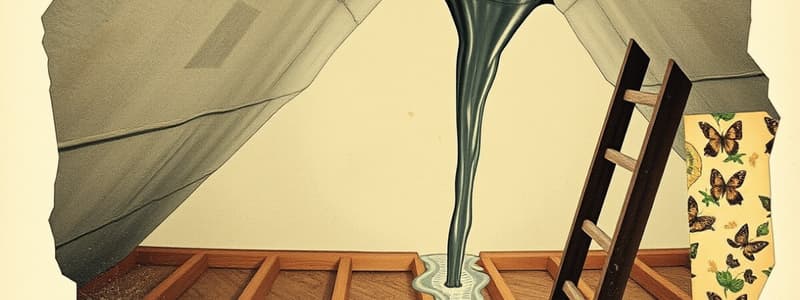Podcast
Questions and Answers
What is the recommended size for inspection holes when checking attics?
What is the recommended size for inspection holes when checking attics?
- 10" x 10"
- 6" x 6" (correct)
- 4" x 4"
- 8" x 8"
What should you avoid doing when checking for extension by pulling the ceiling?
What should you avoid doing when checking for extension by pulling the ceiling?
- Remove drywall from corners (correct)
- Pull drywall from the center
- Inspect only one wall
- Drill drainage holes
What additional measure should be taken to relieve excess water in the attic space?
What additional measure should be taken to relieve excess water in the attic space?
- Install additional insulation
- Drill ventilation holes in the roof
- Drill drainage holes into the ceiling (correct)
- Open windows in the attic
Which consequence might occur if drywall is pulled from corners during an inspection?
Which consequence might occur if drywall is pulled from corners during an inspection?
What is the primary purpose of cutting inspection holes in drywall?
What is the primary purpose of cutting inspection holes in drywall?
Study Notes
Drywall Protection and Inspection
- Importance of protecting the structure during inspections to prevent additional damage and loss.
- When checking for extension, avoid pulling drywall from corners to minimize the risk of needing to replace both walls and ceilings.
- Recommended method for inspection: create small holes measuring 6" x 6" for attic checks to limit damage.
- To manage excess water in attic spaces and reduce overall losses, drill drainage holes into the ceiling.
Studying That Suits You
Use AI to generate personalized quizzes and flashcards to suit your learning preferences.
Description
This quiz covers essential practices for inspecting and maintaining drywall in structures, particularly in attics. Learn the proper techniques for creating inspection holes and managing water drainage to minimize damage. Understanding these methods can help prevent further structural loss.




